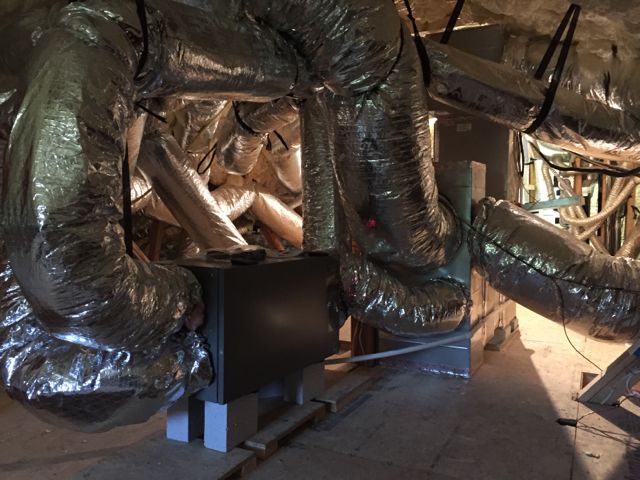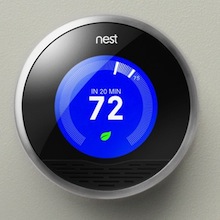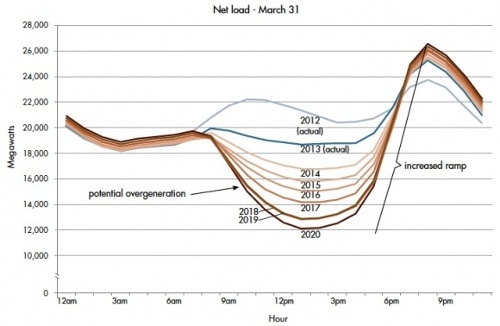My Top 10 Energy Efficiency Articles and Ideas of 2015

The year 2015 is almost finished. I’ve written 69 articles here in the Energy Vanguard Blog. I’ve been to a bunch of conferences and talked to a lot of people. A lot of thoughts about building science, energy efficiency, indoor air quality, and more have gone through my head. As I sit here at the end of the year looking back on all of it, here’s what I see as the best and most interesting stuff I’ve written about.
10. My New Favorite Duct Disaster
Of course, there’s always the fun stuff like this absolute monster of a duct system. And I don’t mean that in a good way. The photo above shows part of it, but if you click the link above, you’ll see a bit more.
9. The Layers and Pathways of Heat Flow
I’ve been teaching this stuff in classes for years, and this year I finally wrote it up for public consumption. Combine this with some of my other articles—like the one about the mind-blowing hole in your building enclosure and the one about flat vs. lumpy insulation—and you’ll have a good understanding of insulation and heat flow.
8. California Mistakes Put Spray Foam Insulation on the “Bad List”
Oh, California. There may be good reasons to be cautious about spray foam, but you sure didn’t get this one right. The official recommendation to include spray polyurethane foam (SPF) insulation in the first three Priority Products in your Safer Consumer Products Program.
7. Introduction to the Physics of Water in Porous Materials
Joe Lstiburek teaches this stuff in his two-day Building Science Fundamentals classes, and I’ve seen versions of it in some of his presentations. It’s also really important stuff that can help you understand how to protect buildings from those three things that cause the most problems in buildings: water, water, and water. (That’s from the late Gus Handegord, a Canadian building scientist.)
6. Green Builder Coalition’s WERS – Water Efficiency Rating Score
And speaking of water, it’s kind of important to everything we do. In fact, it’s right up there with energy. The Green Builder Coalition has been working for nearly two years to put together a program similar to home energy ratings but based on water efficiency. (RESNET’s working on a similar program, but GBC’s program is already out there and getting some traction.) New Mexico is already implementing the program, and you can read about it in this article.
5. Nest Thermostat Data Unveiled at ACI Conference
Michael Blasnik got permission to share some of the data that all those Nest thermostats have been collecting for the past few years. The room was packed. Blasnik had a multitude of charts. The data did not disappoint. Click above to read all about it.

4. Winterizing Your Home? Don’t Caulk the Windows!
Every fall I have to write about this topic, it seems, as the media trot out their silly advice about caulking your windows and weatherstripping your doors. This article, I believe, is the best one I’ve written on the topic. Be sure to read the followup article I wrote, too: 10 Uncommon Tips for Winterizing Your Home.
3. Is This the End of the Double-Wall, Cold Sheathing Scare?
Vapor diffusion is, Martin Holladay says, the bogeyman of building science. It’s been the source of a lot of confusion and misinformation and is rarely the source of moisture problems. With thick walls packed with vapor permeable insulation, however, it can be a problem. In a study from Building Science Corporation, the exterior sheathing of a home with double-stud walls got wet because of vapor diffusion. This was my article explaining their study, in case you don’t want to read the whole 72 page paper yourself.
2. Electricity Demand and the Duck Curve

I ate duck a couple of nights ago. The “duck curve” has nothing to do with real ducks. It has to do with electricity production and use and the shape of a utility company’s load profile throughout the day. It has to do with the increasing amounts of solar electricity in the mix. It has to do with problems that occur when utilities have to ramp up more quickly than is possible as the sun goes down.
And it could be hitting your state already.
1. The World of Smart Begins to Grow Up
Or is it just an illusion?

Allison A. Bailes III, PhD is a speaker, writer, building science consultant, and the founder of Energy Vanguard in Decatur, Georgia. He has a doctorate in physics and writes the Energy Vanguard Blog. He also has written a book on building science. You can follow him on Twitter at @EnergyVanguard.
Related Articles
2013: A Look Back at the Year in Building Science
The State of Building Science in the Post-Mayan Non-Apocalypse
Energy Vanguard’s 25 Ridiculous, Made-up Predictions for 2012
NOTE: Comments are closed.
This Post Has 3 Comments
Comments are closed.

Want to say how thought
Want to say how thought provoking is #2, the predicted change in the electric demand load curve. I expect you do, but wonder if readers appreciate just how much the utility industry will change if these forecasts turn out to be accurate. So many billions of dollars will be re-allocated.
Keeping in mind though, how rare it is for forecasts to be accurate (said with a smile)
Allison:
Allison:
I’m honored that the WERS program left such an impression on you. As you stated, the development group has been working diligently for almost 23 months on a predictive model that is very comprehensive. We’re really excited version 1.0 is complete and ready for use. In fact, last month it helped save a homebuilder in NM approximately $2,000 on water-related permit fees.
Looking forward to the final article of 2015. Happy New Year to you!
Cold Ducks are Tall and
Cold Ducks are Tall and Expensive
Hi Allison,
Thought I’d add this here as I noticed your post on the duck curve is #2.
Duck curves come in different shapes. And it’s the winter peak duck that building science can do a great deal to flatten… turning it from a tall duck with a high and expensive peak into something more easily managed by the grid.
From Bloomberg…
Coldest Weather of Season Sends New York Power Over $1,000
“Cold temperatures across the Northeast are causing higher-than-expected demand for electricity, which generators are struggling to cover,” Ben Chamberlain, a Boston-based power market analyst for Genscape Inc., said in an e-mail. “This has caused high energy prices across much of the Northeast U.S., especially in N.Y. state.”
Spot wholesale power for Manhattan and its four neighboring boroughs spiked by $1,157.88, to average $1,172.75 a megawatt-hour during the hour ended at 10 a.m. on Tuesday, compared with $14.87 during the same hour Monday, grid data compiled by Bloomberg showed.
http://www.bloomberg.com/news/articles/2016-01-05/coldest-weather-of-the-season-sends-new-york-power-over-1-000